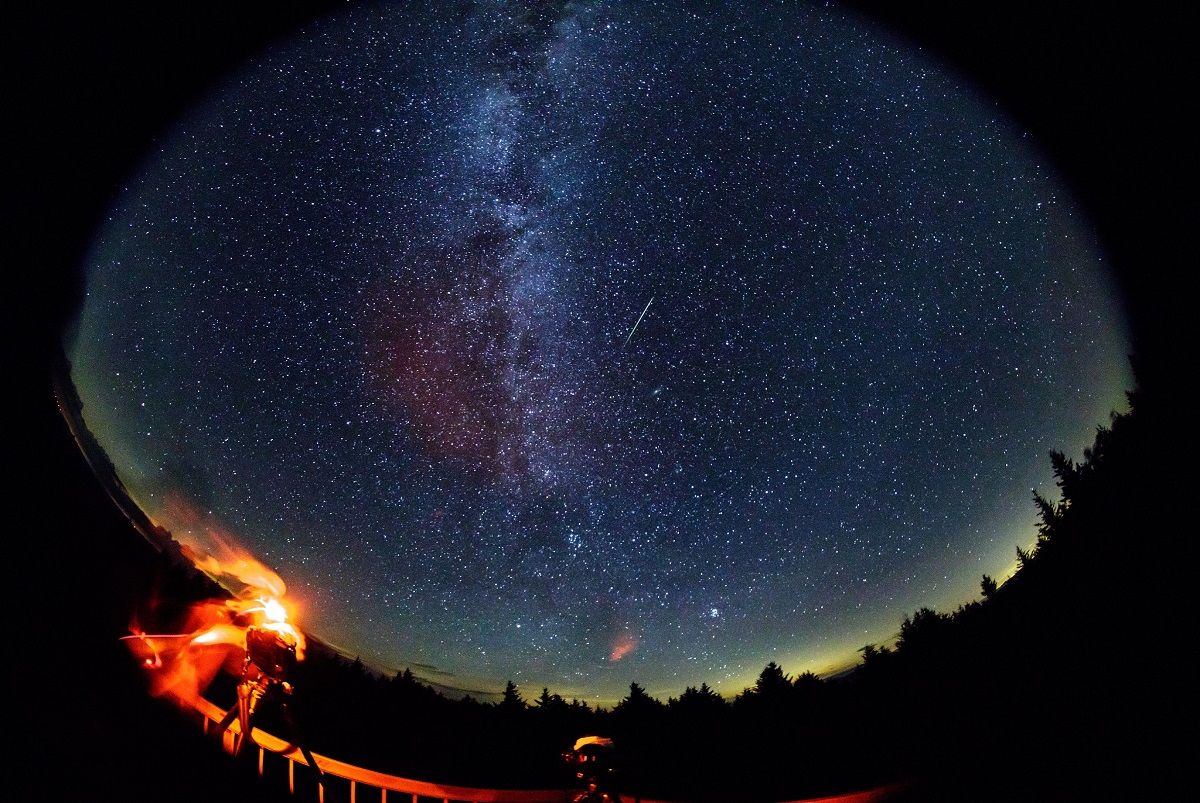Perseid Meteor Shower 2021: The annual Perseid meteor shower is here and ready to bless our eyes on Wednesday night. The annual celestial event is expected to reach its peak just before dawn, i.e, in the wee hours of August 12 (Thursday). During this time, the meteor shower will be most visible to the human eye, although it could put on a fine show for a night or two before and after the said date.
The annual Perseid meteor shower will be visible in the Northern Hemisphere with a sudden onset of a meteor ranging from 15 to 200 in the span of a few hours. It is deemed to be one of the brightest events in the skies that photographers wait to be able to capture.
Perseid Meteor Shower 2021: When and Where to Watch
It is believed that this year’s conditions are as near to perfect as can be. The waxing crescent Moon sets around 10 PM local time, setting a dark, moonless stage until dawn, exactly what one needs to witness the celestial event.
According to Earthsky.org, no matter where you live worldwide, the 2021 Perseid meteor shower will probably produce the greatest number of meteors on the mornings of August 11, 12 and 13.
A person can watch up to 60 meteors per hour at the peak of the event, they said.
In case you cannot step out during this time, you can also livestream it on NASA’s website.
Perseid Meteor Shower 2021: Watch LIVE
More Perseid meteors are starting to show up in the night sky—but we're still only at about 10% of peak Perseid activity.
Join us for our Perseids social livestream late Wednesday night! https://t.co/8iuJil5aGr pic.twitter.com/2pVI1SEAw5
— NASA Marshall (@NASA_Marshall) August 10, 2021
Meteor Shower 2021: How to Watch
One does not need any special equipment, or knowledge of the constellations, to enjoy the Perseid meteor shower. All you just have to do is to find a wide-open sky and a dark spot away from bright lights, all around if possible.
Perseids usually appear from a point high in the north called the “radiant”. However, you need to only point yourself towards the north and look up, US space agency NASA noted.
According to Diana Hannikainen, Sky & Telescope’s Observing Editor, comfort plays an important role in order to enjoy the show in the best way.
“Bring a reclining lawn chair or a ground cloth so you can lie back. Bundle up in blankets or a sleeping bag, both for mosquito shielding and for warmth; clear nights can grow surprisingly chilly, even in August. Next, relax, be patient, and let your eyes adapt to the darkness,” she said.
Astronomy lovers can catch the best glimpses of the meteor shower soon after the evening twilight ends. By then the shower’s radiant — its perspective point of origin in the constellation Perseus — has risen above the northeastern horizon.
The few Perseids that appear this early will be spectacularly long “earthgrazers” that skim along the top of the atmosphere. The higher the radiant, the more meteors you’ll see — so when Perseus climbs higher in the northeast, especially after midnight, more meteors will appear all over the sky.
